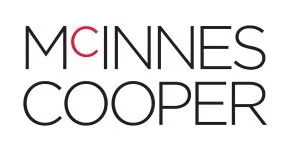NOTE: This article has been updated on April 17th, 2020.
Much has changed since our last publication on the Canada Emergency Wage Subsidy ("CEWS") and the Nova Scotia Small Business Impact Grant. The Federal Government has substantially changed the eligibility requirements for the CEWS since our last update and has now enacted the program. It is expected that the application process will open soon. In Nova Scotia, the government clarified the eligibility requirements for small business grants and opened an application portal, which can be accessed here. Applications must be submitted by April 25.
The Canada Wage Subsidy
On April 2, the federal government proposed the Canada Emergency Wage Subsidy program to provide relief for employers and employees in light of the COVID-19 crisis and its effects on businesses across the country. In the subsequent weeks, the government updated the program and, as of last Saturday, enacted the bill which will bring the program into effect. It is anticipated that the program should be online soon.
Once the program is open for applications, employers will be able to apply for the CEWS through the Canada Revenue Agency's My Business Account portal.
The purpose of the CEWS is to help employers retain workers or otherwise rehire laid off workers despite downturns in business. The CEWS will provide up to 75% of normal wages, to a maximum per employee, to eligible employers for a period of up to twelve weeks, retroactive to March 15, 2020 and running to June 6, 2020.
Eligibility
Individual employers, taxable corporations, partnerships, and non-profit organizations and registered charities are eligible for the CEWS.
The CEWS runs from March 15 to June 6 and is split into three claiming periods:
- March 15 to April 11 (the "March period");
- April 12 to May 9 (the "April period"); and,
- May 10 to June 6 (the "May period").
To be eligible for the CEWS during the March period, an employer must be able to demonstrate a decrease of at least 15% in revenue. For the April and May periods, eligibility requires at least a 30% decrease in revenues.
Employers can use one of two methods to calculate the necessary decreases in revenue:
1. Comparing revenues from each of March, April, and May of 2020 to revenues in each of those same months in 2019;
2. Using an average revenue from January and February 2020 and comparing this figure to actual revenues in each of March, April, and May 2020. The Second Act respecting certain measures in response to COVID-19, which enacted the CEWS, lists the following formula for determining an employer's average revenue from January and February 2020 for use in this method:
0. 5A(B/C)
where
A is its qualifying revenues for the prior reference period,
B is the number of days in the prior reference period, and
C is the number of days in the prior reference period during which the eligible entity was carrying on business.
One of two approaches may be used to calculate the underlying revenues to be used: the accrual method or the cash method. This latter approach allows employers to use cash flow to establish eligibility, so downturns in paid invoices, for example, could establish eligibility. It should be noted that whichever method of calculating revenues an employer selects—accrual or cash—will determine eligibility for the employer across the claiming periods; in sum, whichever method is selected, an employer must stick with for all of the claiming periods. As such, employers must choose wisely.
Revenue is limited to business conducted in Canada and earned from non-arm's length sources. The calculation of revenue, either accrual or cash, must follow the employer's normal accounting and cannot include revenues from extraordinary items or amounts on account of capital. For example, sales of assets or capital gains in a reference period, whether that period is January – February 2020 or March, April, and May of 2019, cannot be used to establish eligibility. Special rules apply to revenue from non-arm's length transactions. Meanwhile, affiliated companies are permitted to calculate revenue together.
Importantly, employers will not be required to demonstrate that their revenue decreases are related to COVID-19.
Claimable Amounts
Retroactive to March 15 and running until June 6, 2020, the CEWS will cover the greater of 75% of remuneration paid to an employee to a maximum of $847 per week or 75% of an employee's "baseline remuneration" to a maximum of $847 per week. An employee's baseline remuneration is to be determined based on the average weekly remuneration paid to that employee from January 1 to March 15, 2020, though not accounting for any full week periods in which the employee did not receive pay. As such, if an employee has had reduced remuneration since March 15 (as a result of reduced hours, for example), the CEWS may allow employers to return employees closer to their pre-crisis remuneration. The CEWS will also apply to new hires, in which case the CEWS covers up to 75% of remuneration to the maximum of $847 per week.
Where 75% of an employee's remuneration is greater than $847, the employer should claim the entire $847 and apply it against the employee's normal wages. In such a case, where the subsidy will cover only a portion of an employee's normal wages, employers must make their best efforts to top-up employees' remuneration to bring them to pre-crisis levels.
Where employees are not at arm's length from the employer (for example, where self-employed or in the case of a family business), the CEWS will be limited to remuneration for the actual pay periods scheduled for employees between March 15 and June 6, 2020, to a maximum of $847 per week or 75% of pre-crisis weekly remuneration. This way, the CEWS cannot be claimed for payment of non-arm's length employees where these employees would not normally have been scheduled to be paid during the CEWS claiming periods. The CEWS cannot be claimed for non-arm's length employees who were not employed prior to March 15, 2020.
The CEWS applies to remuneration for which employers are normally required to remit taxes, including salary, wages, bonuses, and retiring allowances. Eligible remuneration does not include severance pay, stock option benefits (unless exercised), or corporate vehicle use, for example. Eligible remuneration also does not include amounts that are above an employee's baseline remuneration, as defined above; the CEWS is not a raise.
Lastly, where an employer has employees who are on paid leave, employers will be eligible for a refund of EI and CPP contributions made for these employees. These amounts must continue to be remitted, but employers will be able to apply for refunds during the CEWS application process.
Limitations
There is no limit on the CEWS amount claimable by an employer. However, the amount claimable will be reduced by ten percent where the employer is already taking advantage of the previously enacted ten percent temporary wage subsidy program for March 18 to June 19, 2020. Likewise, employers cannot claim amounts for remuneration paid to employees during the period in which an employee would be eligible for the Canadian Emergency Response Benefit (CERB). If an employee goes fourteen days without remuneration, they become eligible for the CERB, in which case the employer cannot claim CEWS to then pay them. However, the government is exploring a process to allow employees rehired during their CERB eligibility periods to cancel their CERB claim so that the employer can return them to the payroll and take advantage of the CEWS.
In the case of employers using work-sharing arrangements, CEWS claimable amounts will be offset by the EI benefits received by employees through the work-sharing program.
New penalties have been introduced to avoid fraudulent claims and to recover monies where claims are later determined to have been ineligible. Employers will be expected to pay all monies back in the event that their claim was processed and later deemed ineligible. Meanwhile, employers who manipulate transactions to establish eligible revenue decreases may face fines equal to up to 25% of the monies claimed. Fraudulent claims under the program may result in other liabilities, including significant fines and/or imprisonment.
Nova Scotia Small Business Impact Grant
The Nova Scotia Small Business Impact Grant program is now online. Employers may apply here. Applications are open only until April 25, 2020.
The Grant is available to eligible small businesses, non-profits, and charities. It is a one-time payment equal to 15% of sales revenue from one of two reference months: April 2019 or February 2020, to a maximum grant of $5000. Employers may use whichever reference month is more advantageous. The grant can be used for any purpose and can be stacked with the Small Business rent deferral program and any federal programs to support small businesses (including the CEWS).
To qualify for the grant, a business must be one of the types of business which has been directed to close or substantially curtail operations in a public health order; these include restaurants, bars, wineries and tasting rooms, personal care service providers such as hair salons, fitness establishments, veterinarians, certain self-regulated and unregulated health professionals, performing arts venues, and trade shows, amongst others. These businesses must also have an anticipated revenue loss for April 2020 of 30% or more and have been established prior to March 15, 2020. To qualify, if incorporated, a business must already be paying the small business corporate tax rate as under the Income Tax Act. Some businesses have been explicitly excluded; these include childcare providers, retail sales, golf courses, March break camps, and physicians, pharmacists, nurses and nurse practitioners, paramedics, and dentists.
The application portal lists the following documents and information a business will need in order to apply:
- business number;
- banking information;
- unaudited income statement for the chosen reference period (April 2019 or February 2020);
- a recent tax document such as T1, T2, T3010 or HST return; and
- image of a voided cheque;
The content of this article is intended to provide a general guide to the subject matter. Specialist advice should be sought about your specific circumstances.


